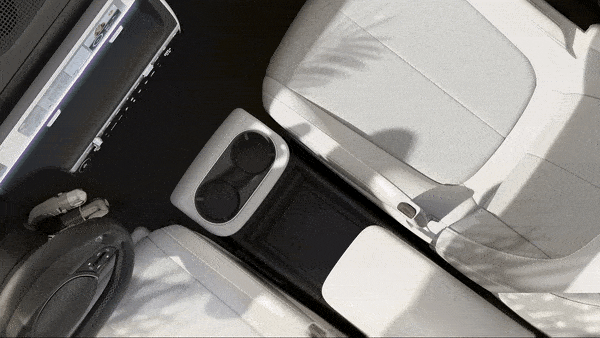A new generation of electric car?
With the IONIQ 5, Hyundai is launching a chic mid-range crossover with which the Korean automaker is opening a new chapter.
The Ioniq 5 is by no means Hyundai Motor’s first electric car, but it was developed from the ground up as an electric vehicle and represents a definite milestone in Hyundai history. The Ioniq 5 is the first of 12 electric models that Hyundai will produce over the next four years will bring to market.
The Ioniq 5 is largely based on the “Pony” designed by Giugiaro, Hyundai’s first production car, as well as the “Hyundai 45” concept vehicle, which the automaker presented in 2019 at the Frankfurt Motor Show.
The V-shaped headlight design also stands out from the current Hyundai product range. The headlight system was specially designed for the Ioniq 5. The small, circular clusters are also used for the taillights.
https://www.youtube.com/watch?v=VVFb9oZ9rWo
Hyundai will offer two battery sizes for the Ioniq 5 as well as the option to choose between rear-wheel and all-wheel drive. The model with the longest range has a 72.6 kWh battery that transfers a combined output of 300 hp and torque of 600 nm to the motors on both axles. This enables an acceleration from 0 to 100 km / h in 5.2 seconds. The smaller battery has a capacity of 58 kWh, the 2WD variant produces 168 hp and enables acceleration from 0 to 100 km / h in 8.5 seconds.
The new electric drive of the Ioniq 5 supports both 400 V and 800 V chargers, which means that it is compatible with next-generation 350 kW chargers – the battery level can be reduced from 10 to in just 18 minutes Bring 80%. In comparison, the Nissan Ariya is only compatible with fast chargers up to 130 kW, and the ID.4 takes 38 minutes to charge the battery from 10 to 80% with a 125 kW charger, currently the most powerful charger.
The other functions of the Ioniq 5 include the fast charging function, with which the vehicle can cover more than 100 km after a 5-minute charging period. Hyundai has already announced that E-GMP vehicles can travel over 500 km on a single charge.
Thanks to its vehicle-to-load (V2L) function, the Ioniq 5 can also act as a charger and deliver up to 3.6 kW of power to devices such as electric bikes or scooters. That’s enough juice to run powerful 110V / 220V devices like an oven, a treadmill, or five huge speakers. This is not possible with Tesla – at least not without installing an inverter in the circuit, which can void the guarantee. The Ioniq is equipped with V2L sockets both inside and outside.
The interior of the Hyundai Ioniq 5
Hyundai made the interior of the Ioniq 5 as comfortable as possible and designed it as a kind of “living space”. The flat battery and the long center distance of the E-GMP offer passengers and luggage a more spacious and flexible interior. The seats have a wide reclining angle and leg rests, which are more reminiscent of a leather armchair than a car, and are also 30% thinner, which provides more space in the trunk.
In keeping with the eco-friendly image of electric vehicles, much of the upholstery is made from sustainably sourced materials such as recycled PET bottles and plant-based fibers.
At the center of the cockpit is a 12-inch infotainment screen, while in front of the driver is a customizable 12-inch digital instrument cluster.
For the first time, Hyundai has a head-up display (HUD) that projects important information onto the windshield so that the driver does not have to take his eyes off the road as often.
The advanced driver assistance systems (ADAS) include Highway Driving Assist II, which has so far only been used in vehicles from Hyundai’s luxury sister, Genesis – the brand is also being launched in Europe this year. The system makes it possible to maintain a certain speed and a certain distance from the car in front and helps to keep the car in lane.
Optional solar roof
One feature we’re particularly looking forward to is the solar roof – not just because it’s a useful extra, but because we’re excited to see how many buyers will choose this option.
In an interview with Ruff Van Nuffel, we learned that buyers can expect a range gain of 2000 km per year if they are in a relatively sunny place (for example, southern Spain).
Hyundai’s Ioniq 5 will be launched in selected countries in the first half of 2021, but in North America it won’t be available until the fall. The prices have not yet been announced, but this information will likely be announced in time for the launch.







